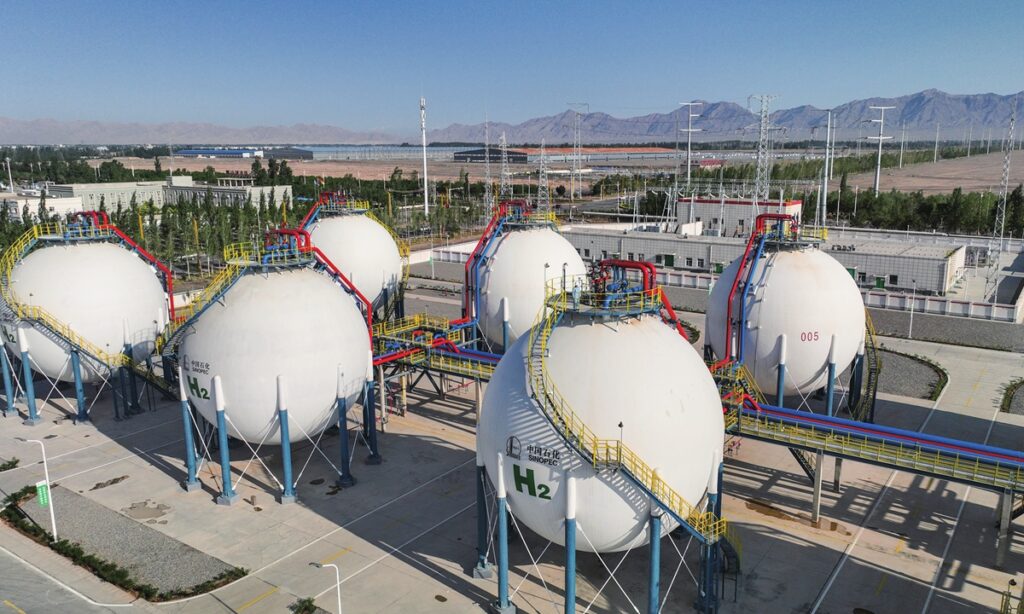China’s Sinopec has begun producing hydrogen at its Xinjiang Kuqa Green Hydrogen Demonstration Project in Kuqa, Northwest China’s Xinjiang Uygur Autonomous Region, the stated-owned energy giant announced on Friday, Xinhua reported.
The project, which marks China’s first photovoltaic green hydrogen plant with an annual capacity of over 10,000 tons, signals a major technical breakthrough in green transition in the country’s energy sector, as hydrogen produced with renewable energy such as wind and photovoltaic power is eco-friendly with almost no greenhouse gas emissions.
At present, technologies about both photovoltaic power generation and hydrogen production are relatively mature, and there are various studies about using photovoltaic power to produce hydrogen as a promising way of storing solar energy, but large-scale project in this regard like one in Xinjiang is a first-time trial in China.
As hydrogen has been gradually considered as one of the most important solutions to global energy transformation, many countries and regions such as Japan, the US and the EU have attached great importance to the technological development of hydrogen energy and set various development goals.
In China, hydrogen energy generation started relatively late, but it has seen rapid development over the past few years. By the end of 2022, China had completed construction of 274 hydrogen refueling stations, the most in the world. Given hydrogen’s potential in clean-energy transition, many believe it is a solution that will not only help ease China’s energy supply pressure but also help achieve its carbon neutrality target.
Of course, it needs to be acknowledged that despite the breakthrough, China’s development in hydrogen technology is not completely mature yet, with obstacles to be addressed, therefore it has the need to strengthen cooperation with other countries to further accelerate the pace of clean-energy transition.
When it comes to hydrogen cooperation, China has its own unique advantage, that is, the ability to quickly transform advanced technology into actual manufacturing capacity. If anything, Xinjiang is a case in point. In fact, Xinjiang has become an important clean-energy base for China’s diversification of energy resources. As of the end of April this year, Xinjiang’s power grid had installed 44.63 gigawatts (GW) of renewable energy, accounting for 37.8 percent of total installed capacity. In the first four months of this year alone, 3.76 GW of renewable energy were connected to the Xinjiang power grid, representing 8.4 percent of the total renewable energy capacity that has been built so far, according to media reports.
Thanks to a local renewable resource endowment and continuous technological breakthroughs, Xinjiang is playing an increasingly important role in China’s drive to promote a clean-energy transition, which is another testament to the country’s ability to break through Western containment.
For a long time, some Western countries have stressed the urgency of developing clean energy on the one hand, while on the other hand they have tried to discourage the usage of Chinese new energy products such as photovoltaic parts for various reasons, even though they are well aware that the disruption of the supply chain is hindering the development of the new-energy industries in their own countries by increasing the costs and dragging on the construction speed.
Yet, the latest development in photovoltaic hydrogen production project in Xinjiang shows that China will not be deterred by Western curbs and trade barriers on China’s new-energy development. Instead, Western containment will only accelerate our energy transition that will achieve breakthroughs in all aspects, whether it is about clean energy or other sectors.
(Global Times)




